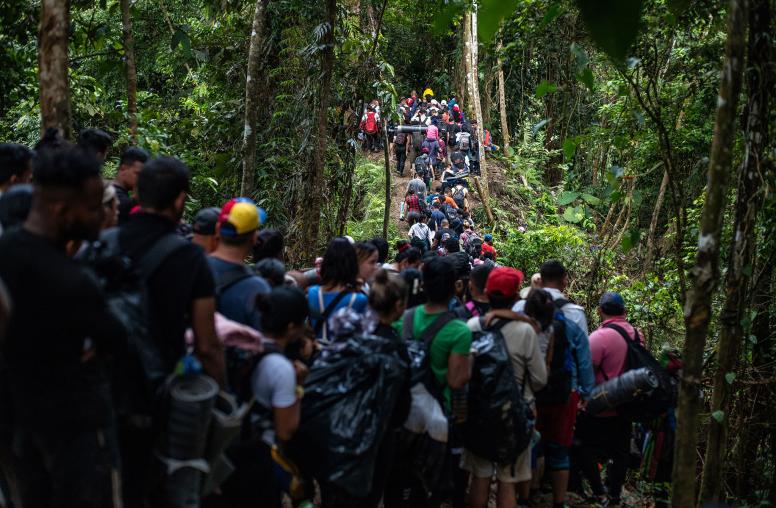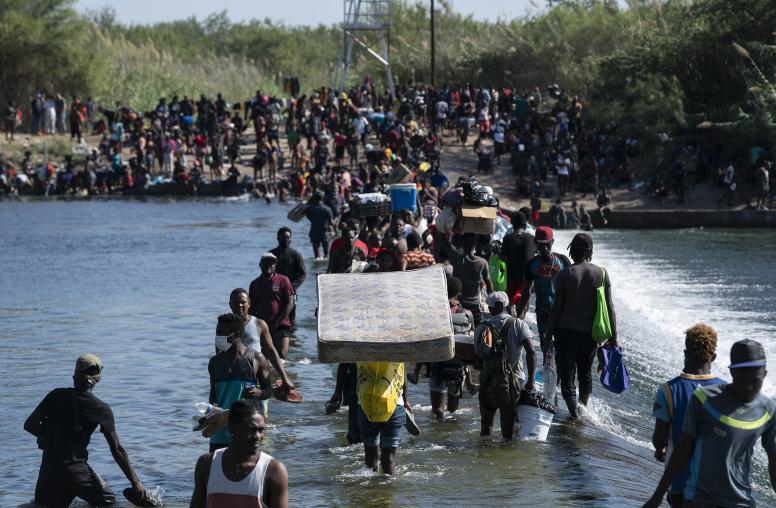The Coronavirus is a Call To Build Resilience in Fragile States
How the Global Fragility Act can pave a path forward.
As more developed nations have struggled desperately to contain and manage the COVID-19 pandemic, the specter of the virus rolling through the more fragile countries in the Sahel, Horn of Africa, and parts of the Middle East is a terrifying, slow-motion train wreck with the potential to trigger a devastating multidimensional-tiered health, economic, political, and security crisis. It also provides an urgent call to action to do things differently in fragile states so they can recover better.

Over the last two decades, fragile states have occupied significant attention as policymakers have sought to understand and address the core conditions that render these states the common denominator in a litany of global threats: terrorism, civil wars, extreme poverty, and yes, pandemics. More than 1.8 billion people live in states that are weakly governed or governed with policies that result in deep inequality and exacerbate social division. These states, frequently wracked by violent conflict, are especially vulnerable to the kind of shocks delivered by natural disasters or pandemics.
I witnessed this firsthand in 2014, when I ran the USAID task force for the Ebola outbreak in West Africa. As the crisis tore through three nations recovering from decades of vicious civil wars, the vulnerability of fragile states to these kinds of shocks was starkly illustrated. People deeply mistrusted their governments, ignoring the life-saving messages that could have more quickly stopped the disease from spreading. Accurate data was difficult to obtain. Families in crowded urban areas had little ability to separate the ill and dying. Police tried repressive tactics that backfired. And health systems were weak to non-existent for large swaths of the region.
These same conditions exist across a large swath of fragile countries, and this time, the virus, although less fatal, is what public health officials have feared most: potent and airborne.
As death tolls rise and economies crash across Europe and the U.S., the potential for COVID-19 to sweep through fragile environments without significant, effective assistance is a dangerous possibility. War has caused foreign medics to flee Libya, leaving behind a collapsed health system. In Venezuela, more than 30 percent of hospitals lack power and water, and 80 percent lack basic supplies or qualified medical staff. Sudan, currently in the middle of an historic, delicate political transition, has only 80 ventilators and 200 intensive care beds for its 44 million people. From refugee camps to slums across capital cities, citizens lack access to clean water and proper sanitation.
It is especially worrying that some governments are now responding with power grabs and severe measures under the cover of a health response. When commuters in Kenya were caught on the streets after curfew, Kenyan police officers fired tear gas into the crowds. South African police attacked homeless people with batons and rubber bullets only minutes after lockdown went into effect in Johannesburg. In Rwanda, there are reports that police shot and killed two young men found violating lockdown orders.
COVID-19 in fragile states presents an urgent crisis. But as Milton Friedman once said: “Only a crisis—actual or perceived—produces real change. When that crisis occurs, the actions that are taken depend on the ideas that are lying around. That, I believe, is our basic function: to develop alternatives to existing policies, to keep them alive and available until the politically impossible becomes politically inevitable.”
In just the last year, a remarkable consensus has emerged among donor countries and multilateral institutions that we need to think differently about how to help fragile states. New strategies and frameworks by the United Kingdom, the World Bank and IMF outline similar approaches for aligning international strategies with a joint focus on changing the weak and often exclusionary governance at the heart of fragility. The World Bank’s recent strategy on Fragility, Conflict and Violence recognizes that addressing fragility and reducing violence is key to ending poverty.
The U.S. Government similarly passed the landmark Global Fragility Act in late 2019, which calls for the U.S. Government to align security, diplomatic, and development action in a coordinated long-term strategy to address the causes of fragility and violence. The act calls for international coherence in strategies to create compacts with local actors to build more inclusive, more legitimate governance structures. In addition to an urgent humanitarian response, these are the strategies needed to combat the pandemic—not just to beat the virus, but also to ensure that fragile countries don’t collapse under the crisis, further fragment into violence, or harden into repressive authoritarian governments that will perpetuate further cycles of violence and fragility.
Those countries most vulnerable to the impact of the pandemic will require significant support beyond humanitarian assistance, including debt relief and concessional financial support. Now is the opportunity to increase the effectiveness of this aid with coordinated international strategies that help strengthen institutions, increase equitable distribution of services and access to justice.
Two decades of evidence tell us that nations with high levels of social cohesion and citizen trust in their government are best able to withstand the inevitable shocks that batter us all. Now is the time for the U.S. to provide leadership consistent with the core tenets of the Global Fragility Act: coordinate international efforts in support of locally led solutions that strengthen state-society relations and create more resilient partners around the world.


